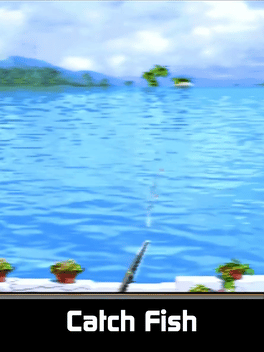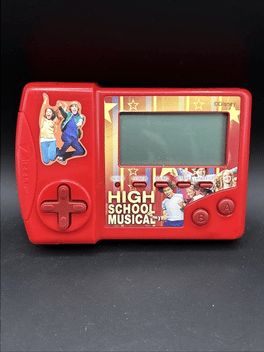New Games - Page 10009
-
Catch Fish
2007
Catch Fish
2007
Fishing game. The game offers three options each for various fishing equipment, including bait and hooks, with the latter options for each being locked at the beginning. -
VC-3
2007
VC-3
2007
In addition to the games that were included with the first release of the Vii (Free Craps, which was not included on Vii 2), all models of the Vii also include a cartridge titled 7in1 or 10in1 which respectively features seven and ten preloaded games. Three different cartridges exist (games in double quotes are exclusives.) This is the third cartridge, with the games: "Brave Kaka" (similar to Mario Bros.) "Hero Legend" - a "maze" game "Rapid Stream" - a "platform" game "Super Move Fun" - a Bejeweled like game "Magic Jelly" - a Clu Clu Land meets Q*Bert like game "Bump Bomb" - A Marbles like game "Tiger Rescue" - an "adventure" game -
VC-2
2007
VC-2
2007
In addition to the games that were included with the first release of the Vii (Free Craps, which was not included on Vii 2), all models of the Vii also include a cartridge titled 7in1 or 10in1 which respectively features seven and ten preloaded games. Three different cartridges exist (games in double quotes are exclusives.) This is the second cartridge, with the games: Bubble Blaster Jewel Master 2 Pinball Fish Squirrel Bobble Lightning Plan "Plumber" (similar to Super Mario) "Mr Onion" (similar to Donkey Kong) "Fire Fighter" (similar to Fire) "Dream Bubble" (a variant of Tetris) "Bump Jump" (similar to Arkanoid) -
VC-1
2007
VC-1
2007
In addition to the games that were included with the first release of the Vii (Free Craps, which was not included on Vii 2), all models of the Vii also include a cartridge titled 7in1 or 10in1 which respectively features seven and ten preloaded games. Three different cartridges exist (games in double quotes are exclusives.) This is the first cartridge, with the games: "MaJong13" (a 'Mahjong-type game) "MaJong16" (similar to MaJong13) Bubble Blaster (similar to Puzz Loop and Zuma) Jewel Master 2 (similar to Magic Jewelry andColumns) Pinball Fish (similar to Breakout) Squirrel Bobble (similar to Puzzle Bobble and Bust-A-Move) Lightning Plan (similar to Silkworm) -
Sport Vii
2007
Sport Vii
2007
The Sport Vii is a video game console similar in aspect to Nintendo's Wii, and it was manufactured by Jungle Soft. It was originally released in China in 2007. The Vii was not intended to be a seventh-generation console like the Wii, and was instead part of the market of inexpensive consoles with built-in games. It is based on the 16-bit Sunplus SPG CPU and has 8.5 MB of internal memory for saving. Games: Happy Tennis - a tennis game (similar to Wii Sports Tennis) Catch Fish - a fishing game (similar to Wii Play Fishing) Bowling - a bowling game (similar to Wii Sports Bowling) Alacrity Golf - a minigolf game (similar to Carnival Games: Mini-Golf) Ping Pong - a table tennis game (similar to Wii Play Table Tennis) Smart Dart - a simulated darts game Fry Egg - a cooking game (similar to Cooking Mama) Bird Knight - a tilt-to-play game (similar to Balloon Fight) Fever Move - a music and dance game (similar to Dance Dance Revolution / Guitar Hero) Come On! - A distance game, in-which you feed seals. Fantasy Baseball - -
Beach Volleyball
2007
-
Fencing
2007
-
Super Shoot
2007
-
Badminton
2007
-
Sword of Warrior
2007
-
Swimming
2007
-
Curling
2007
-
Disney Fairies
2007
-
Disney High School Musical
2007
Relive the excitement of High School Musical anytime, anywhere with this compact handheld LCD game developed by Zizzle. Released in 2007, the game offers five built-in mini-games inspired by scenes from the hit Disney film. Players use physical buttons to navigate rhythm and memory challenges, all displayed on a classic black-and-white LCD screen. With character art and familiar themes, it’s designed for younger fans looking to experience the magic of East High on the go. No console required—just insert AAA batteries and start playing! -
Hannah Montana
2007





